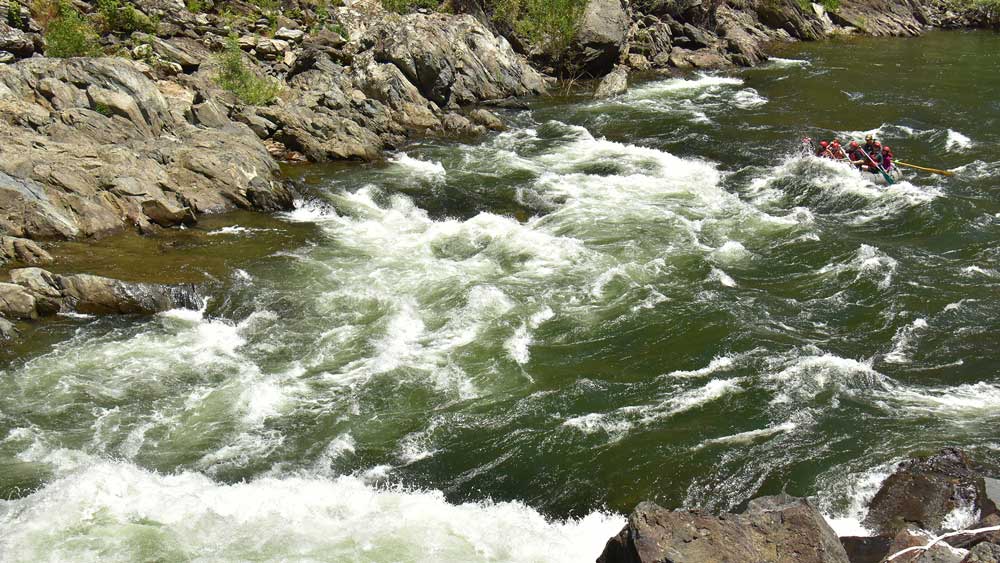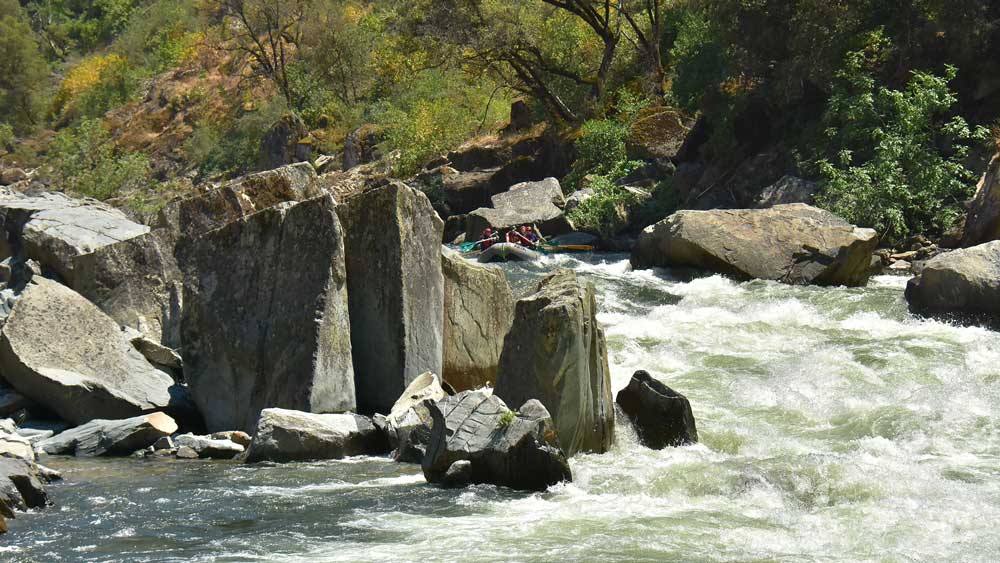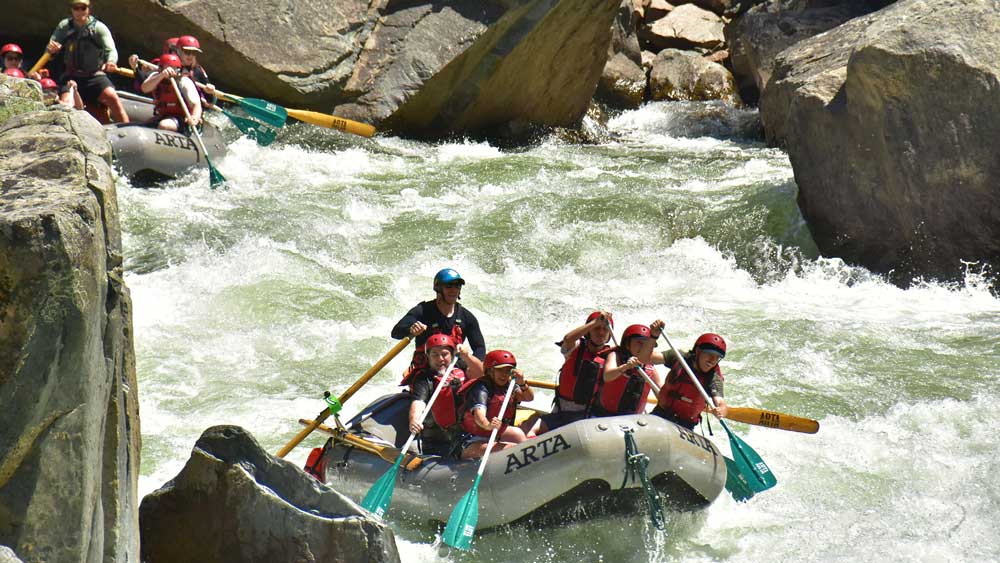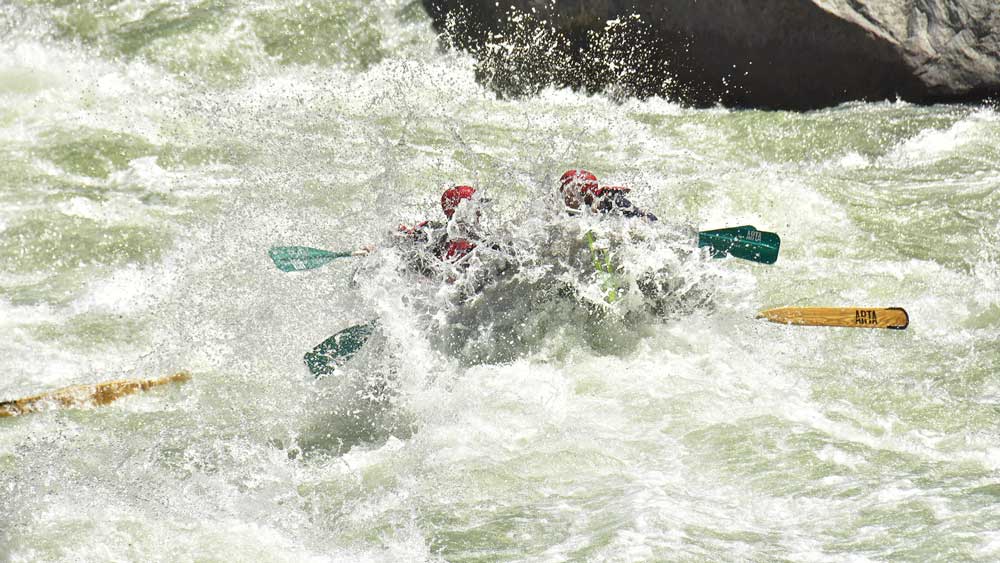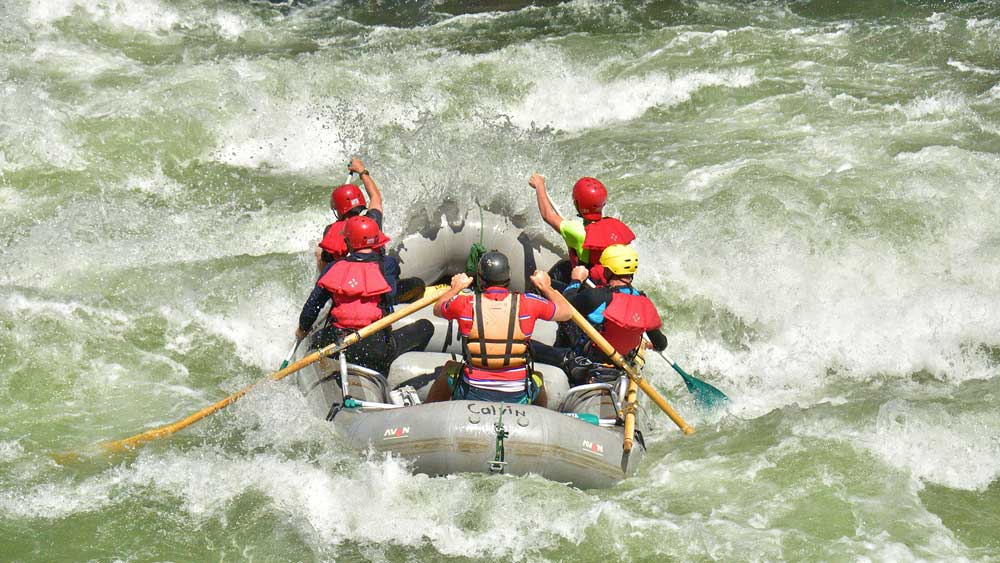 For Right-Brained People
For Right-Brained PeopleAfter plunging more than 1,400 feet over Yosemite Falls and winding gently through Yosemite Valley, the Merced River still has something left for us, namely: great whitewater. This is a free-flowing river and it feels like it; the water is cold, the rapids are frisky, and the river and rapids change daily as the snow melts. When the flow is high (mid-May to mid-June), there is no better day of whitewater rafting: all-forward, straight-shot lines through big, roller-coaster waves. All day. Super fun. (So much fun that the RVs pull off the highway to watch us.) When the water isn’t high, the rapids are still fun, just a bit tamer; like a little roller-coaster, (and the RVs still pull over). If you’ve got plans to visit Yosemite National Park, you should spice up your vacation with a day of whitewater rafting on the Merced.
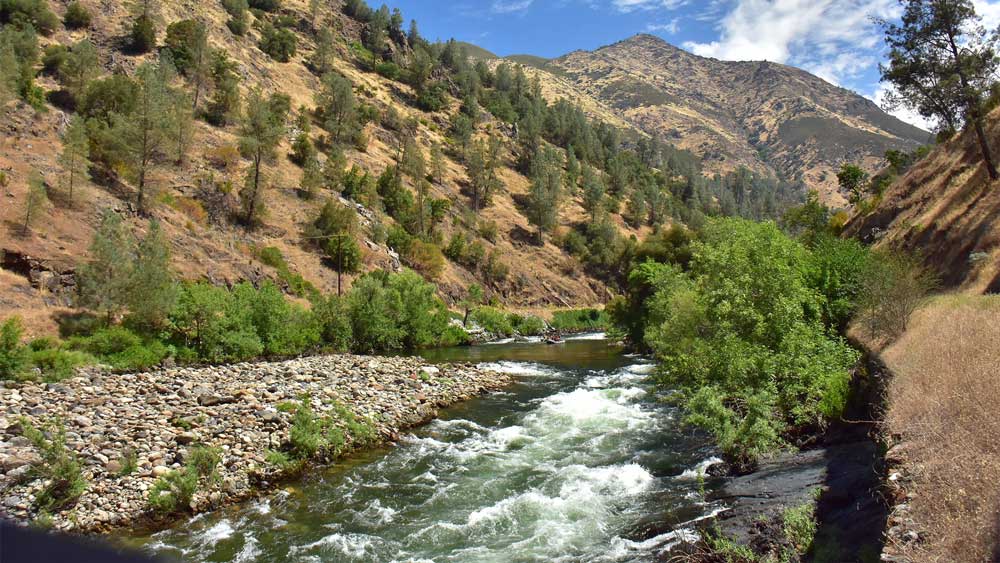
More about the Merced River
The Merced River originates on the slopes of some of the highest peaks in Yosemite National Park and flows free and undammed until it reaches Lake McClure on the edge of the San Joaquin Valley.
Our encounter with the river begins about 10 miles outside of the Park and continues for 14 miles through the Sierra foothills. Since the river is only runnable during the Spring runoff period, the canyon hillsides are green and often covered with wildflowers, making a lovely back-drop for our trips.
The Merced is a powerful river. Dropping at nearly 30 feet per mile with wide fluctuations in its flow, it presents a difficult array of exciting and challenging rapids. While the Tuolumne is known for its rocky, technical drops, the Merced is famous for large, roller-coaster waves and big crashing swells, perfect for veterans of the American and adventurous newcomers.
Best guide I’ve ever had and I’ve rafted rivers all across the country.
Thanks for your work to preserve the rivers of the west.


